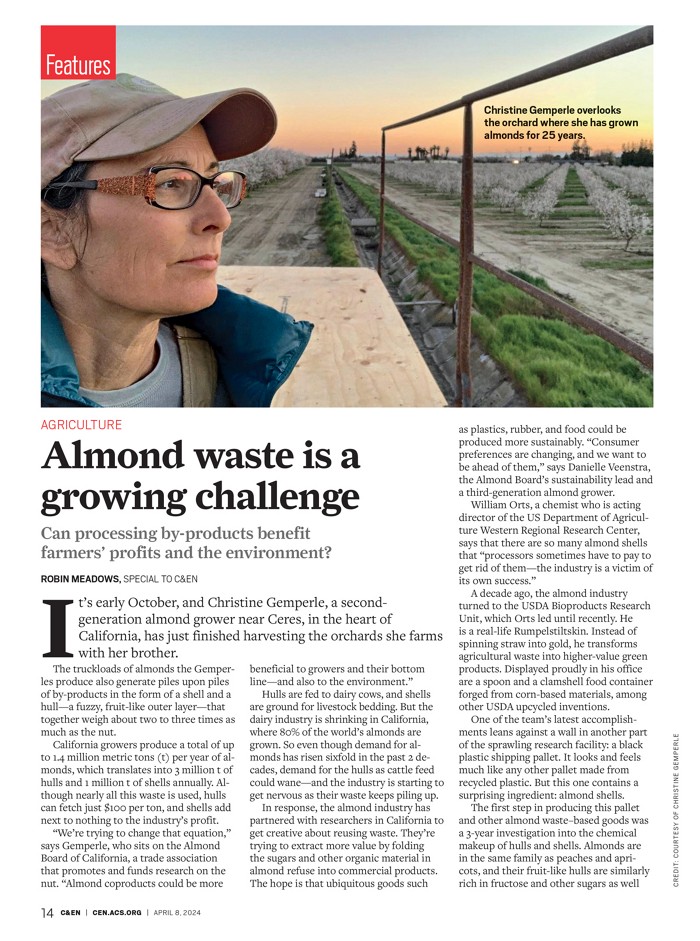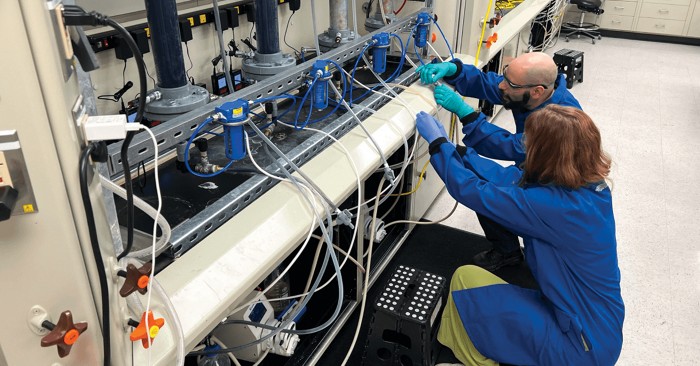Advertisement
Grab your lab coat. Let's get started
Welcome!
Welcome!
Create an account below to get 6 C&EN articles per month, receive newsletters and more - all free.
It seems this is your first time logging in online. Please enter the following information to continue.
As an ACS member you automatically get access to this site. All we need is few more details to create your reading experience.
Not you? Sign in with a different account.
Not you? Sign in with a different account.
ERROR 1
ERROR 1
ERROR 2
ERROR 2
ERROR 2
ERROR 2
ERROR 2
Password and Confirm password must match.
If you have an ACS member number, please enter it here so we can link this account to your membership. (optional)
ERROR 2
ACS values your privacy. By submitting your information, you are gaining access to C&EN and subscribing to our weekly newsletter. We use the information you provide to make your reading experience better, and we will never sell your data to third party members.
Agriculture
Turning off FUN protein boosts nitrogen fixation
The research uncovered a mutated gene that keeps the nitrogen-fixation process going, even when soil nitrate is high
by Max Barnhart
July 16, 2024

A typical day for Jieshun Lin began with a long bus ride to the greenhouses. “For 10 hours each day, I would pull up plants and wash their roots, looking carefully at each individual plant. [Up to] 10,000 plants in a single day. Then in the evening, take the long bus ride back home,” he says. All that grueling work would be well worth the effort as it led to a discovery that could help improve the already impressive nitrogen fixation ability in legumes.
When Lin was a postdoc at La Trobe University, he was tasked with making mutants of the legume Lotus japonicus and surveying them, hoping to find specimens with enhanced nitrogen-fixing capabilities. Legumes have special structures on their roots called nodules, which provide a home for bacteria that convert atmospheric nitrogen into nitrate. And Lin was spending all those hours in the greenhouses, screening “more than 150,000 plants,” he says, over the course of about a month, trying to figure out why that nitrogen conversion process stops when the concentration of nitrate in the soil gets too high.
The reason, Lin and collaborators found, was published in Nature on June 26th (2024, DOI: 10.1038/s41586-024-07607-6).
The plants Lin found in the genetic screen had a gene mutation the research team named “fixation under nitrate”—or fun for short. The team found that in its ordinary state, the FUN protein senses zinc concentrations in the plant, which are directly related to soil nitrate concentrations. When zinc gets low under high nitrate conditions, FUN shuts off nitrogen fixation in nodules. But when FUN is broken, like it is in Lin’s mutant, the nodules keep making nitrate even when the nitrate in the soil is high.
Michael Udvardi, a professor of legume genomics at the University of Queensland, says that this research “could help to conserve soil nitrogen for subsequent crops [after legumes with this mutation are planted] . . . and may also lead to higher protein levels in seeds and/or greater seed production.”
Dugald Reid, a plant geneticist at La Trobe University and the principal investigator of this study, says the work is important because “maximizing the benefits of legumes in our agricultural system can have a big impact in terms of nitrogen fertilizer use.” However, Reid acknowledges that the research needs to be applied to crop legumes and says they’ve begun this process in soybeans and cowpeas.
Lin says that finding this new gene and uncovering its mechanism of action has given him a lot more confidence as a researcher. Since his postdoctoral work, Lin has started his own lab at Aarhus University in Denmark and has grown to feel like he belongs in the same space as his competitors in this field. “Now I feel more confident I can win big funding,” he says. “I’m sure I will get it, it’s just a matter of time.”





Join the conversation
Contact the reporter
Submit a Letter to the Editor for publication
Engage with us on Twitter